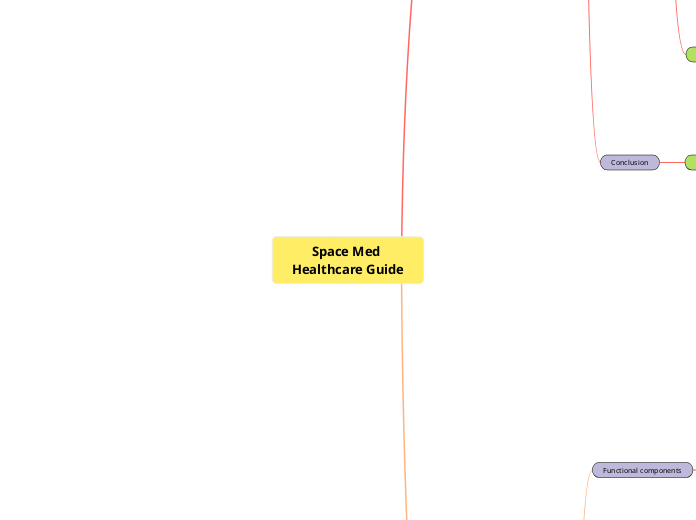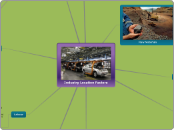Space Med Healthcare Guide
Using this workbook
Building Codes And Regulations
State and local handicap accessibility standards
State and local fire codes
State and local building codes
State health agency codes
State hospital licensing rules
Space Conversion Factors
BGSF/M (Building Gross Square Feet/Meter)
Additional Factor 8-12% (Circulation & Mechanical Areas)
FGSF/M (Floor Gross Square Feet/Meter)
Additional Factor 20-30% (Circulation & Mechanical Areas)
DGSF/M (Department Gross Square Feet/Meter)
Additional Factor 20-50% (Circulation & Mechanical Areas)
NSF/M (Net Square Feet/Meter)
Special Patient Populations
Behavioral And Mental Health Risk Assessment
Patient Handling And Movement Assessment
Infection Control Risk Assessment
Common Spaces
▪ Private inpatient rooms with en suite toilets/showers.
▪ Single-patient exam/treatment rooms used for one-on-one patient and provider encounters.
▪ Patient care stations used for patient treatments or pre- and postprocedure care that include lounge chairs, stretchers, or beds, in bays with curtains on three sides or a semi-enclosed cubicle with curtain closure.
(Grouping spaces)
Unique Space Planning Approach
Optional space
Fixed spaces
Variable spaces
Workload dependent space
Organization of each section
Space Med Guide's 15 Sections
Potential Facility Planning Pitfalls
Facility Layout Considerations
Future Flexibility and Adaptability
Space Planning Approach
Major Planning Issues
Current Trends
Functional components
15. Shared staff support services
15.6 Staff lockers/changing facilities
15.5 Employee fitness center
15.4 Child daycare center
15.3 Physician lounge/on-call suite
15.2 Medical library
15.1 Conference/education center
14. Building support services
14.6 Staff/administrative space
14.5 Telecommunications equipment
14.4 Enviromental and maintenance services
14.3 Food and nutrition services
14.2 Central sterile processing
14.1 Materials management
Typical services
Mail room/copy center
Waste removal/soiled holding
Linen service
Bulk/retail storage
Post-receiving area
Receiving dock/exterior storage
Material management systems
Stockless
Just in time
Traditional
13. Central administrative services
13.4 Common support space
13.3 Human resource
13.2 Health information management
13.1 Central administrative office suite
12. Customer access services
12.7 Volunteer support space
12.6 Gift shop
12.5 Coffee shop
12.4 Spiritual/pastoral care
12.3 Patient resource center
12.2 Patient intake services
12.1 Central reception area
11. Clinical laboratory
11.9 Staff/administrative space
11.8 Common laboratory support space
11.7 Morgue/autopsy suite
11.6 Anatomical pathology
11.5 Electron microscopy suite
11.4 Molecular testing suite
11.3 Microbiology
11.2 Core laboratory
11.1 Outpatient specimen collection/satellite laboratory
10. Pharmacy
10.3 Satellite pharmacy
10.2 Outpatient pharmacy
10.1 Hospital pharmaci
9. Ambulatory care
9.5 Renal dialysis center
9.4 Dental suite
9.3 Ophthalmology/optometry suite
9.2 Medical procedure unit
9.1 Physician practice/outpatient clinic
8. Onccology services
8.4 Staff/administrative space
8.3 Radiation therapy suite
8.2 Medical oncology/infusion therapy
8.1 Patient intake area
7. Rehabilitation services
7.5 Staff/administrative space
7.4 Speech and hearing services
7.3 Occupational therapy
7.2 Physical therapy
7.1 Patient intake area
6. Behavioral health services
6.5 Staff/administrative space
6.4 Inpatient behavioral health unit
6.3 Intensive outpatient/partial hospitalization program
6.2 Outpatient behavioral health services
6.1 Patient intake area
5. Maternal and infant services
5.5 Staff/administrative space
5.4 Special care nurseries
5.3 Anterpartum/postpartum unit
5.2 Birthing unit
5.1 Common family/visitor support space
4. Patient care units
4.6 Staff/administrative space
4.5 Skilled nursing/rehabilitation unit
4.4 Intermediate care unit
4.3 Intensive care unit
4.2 Medical/surgical patient care unit
4.1 Common family/visitor support space
3. Imaging and other diagnostic services
3.6 Staff/administrative space
3.5 Common clinical support space
3.4 Other diagnostic services
3.3 Nuclear medicine/molecular imaging area
3.2 General radiology area
3.1 Patient intake area
2. Surgical and endovascular services
2.5 Surgery suite (Ambulatory surgery center)
2.4 Surgery suite (Hospital)
2.3 Post-anesthesia unit/phase I recovery area
2.2 Pre-procedure care unit/phase II recovery area
2.1 Patient intake area
1. Emergency and urgent care services
1.7 Staff/administrative space
1.6 Shared clinical support space
1.5 Behavioral health crisis unit
1..4 Observation unit
1.3 Nonurgent care/fast track area
1.2 Emergent/urgent care area
1.1 Planning intake area
Introduction
Conclusion
Planning the healthcare campus
An administrative office building
a separate service center (materials management, central sterile processing, enviromental/building maintenance services and a central kitchen)
Specialty centers of excellence (cancer centers, heart centers, women's health centers and sports medicine centers)
Medical office buildings
Patient care units
Solution
Right location
Building suitability
Emergency preparedness
Large open areas (entrance lobbies, cafetarias and conference rooms) could also be equipped with hidden compartments for medical gases, electrical and data outlets
Medical gases and electrical support in pre surgery preparation and phase II recovery areas could be upgraded to a universal Post-Anesthesia Recovery (PACU) standard to support of patients during a surge
New patient headwalls could also be equipped to meet critical care requirements
Require placement of the toilet room to allow access from either bed
Surge bed capacity could be accomodated by constructing some acuity-adaptable patient room
Operational efficiency
Optimizing Future Flexibility
Flexible Infrastructure
Leasing Space
Unbundling Selected Services
Flexible Space
Multiuse Or Shared Facility
Access
Right size
The desired amenities
Technology
Equipment
Staffing
Projected demand
Implementation
Begin detailed functional and space programming
Developing the functional and space program
Components of the Functional and Space Program
For Each Department or Functional Area
• Documentation of Functional Planning Assumptions:
1. Current situation (baseline)
2. Future vision and facility planning objectives
3. Current and projected utilization (workloads)
4. Planned hours of operation
5. Current and future staffing (by shift)
6. Operational and support systems assumptions
7. Major equipment/technology required
8. Interdepartmental adjacencies and access
9. Facility layout and design considerations
10. Future trends and operational flexibility
11. Outstanding issues to be resolved
• Listing of Department Net Square Feet (Meters)
• Estimate of Department Gross Square Feet (Meters)
Estabish benchmark and monitor long-range facility needs
Right services
Business plan
Market dynamics
Planning the healthcare campus
Staff amenities such as a child daycare center and a fitness center
a wellness or complementary medicine center
a skilled nursing facility
a rehabilitation center
Physician offices in one or more medical office buildings
Acute care hospital
Organization's strategic
initiatives
Integrated facility planning process
Development at capital investment strategy and approval
Implementation plan (Project)
Reach conseus on long-range facility investment strategy (Kesepakatan investasi jangka panjang)
Operation and technology investment
Determine facility needs
Review strategic direction
Asses existing space, functional layout, capacity and infrastructure
Problems
Integration of imaging into most medical subspecialties.
Advances in information/telecommunication technology
COVID-19
Rapid growth in telemedicine
New safety protocols.
Hospitals treating those who have postponed care
A nett loss of $54 billion for 2021 projected to 2022
42% drop in Emergency Department visits 2020 compared to the year before
41% US adults avoided medical care during pandemic
Airborne Transmission
Shortages of nurses
Balancing emergency readiness and Routine Health Services
Shrinking Workforce, aging infrastructure, narrow operating margin
Lack of space and staff, technology defficient, labor intensive operational systems









